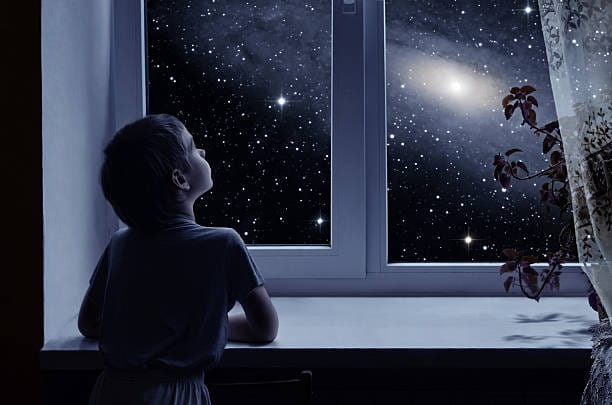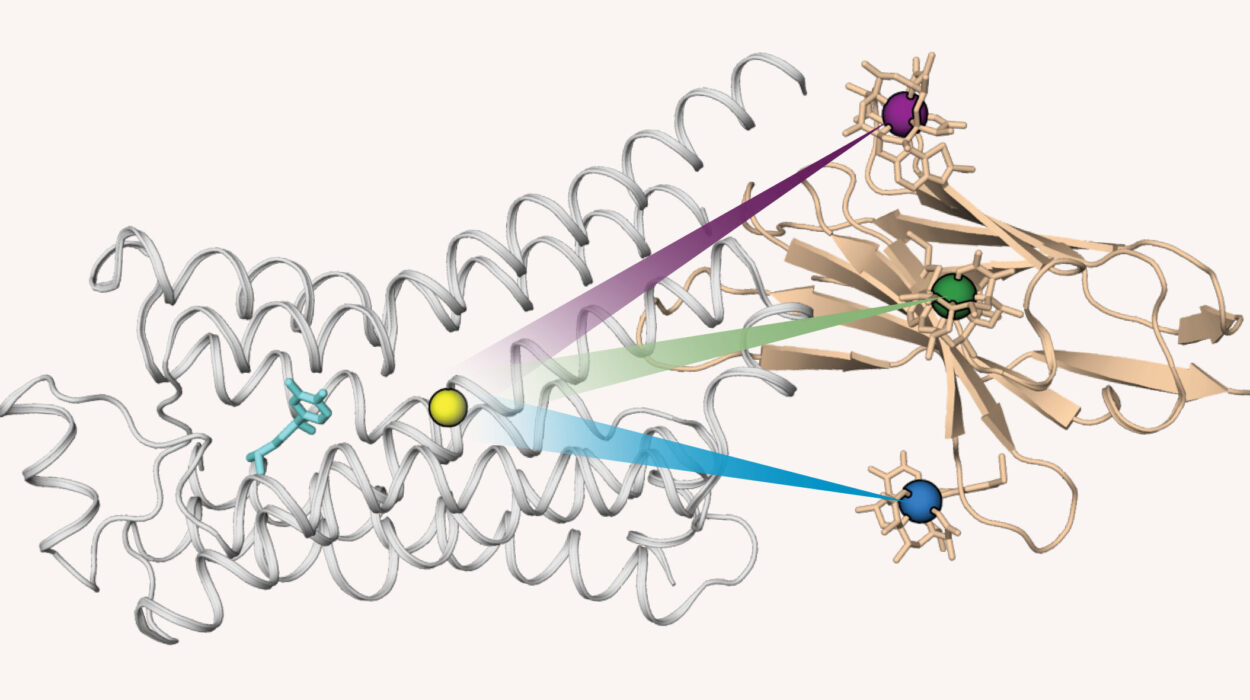Every night, as we surrender to sleep, something extraordinary happens inside our minds. The boundaries of reality dissolve. Logic loosens its grip. We drift into a world where we can fly, meet people long gone, live multiple lives, and experience wonders and terrors beyond our waking comprehension. This nightly theater of the brain—dreaming—has fascinated humanity since the dawn of time. Ancient civilizations saw dreams as messages from gods or glimpses into the future. Poets and philosophers pondered their meanings. Yet even now, in the age of neuroscience and brain scans, dreams remain one of the greatest enigmas of human existence.
Science has illuminated many aspects of sleep, but dreams are different. They are deeply personal, vividly emotional, and defy simple explanation. Why do we dream? What happens in the brain when dreams unfold? Can they reveal hidden truths about who we are? To journey into these questions is to journey into the very heart of what makes us human.
The Landscape of Sleep
Before we can understand dreams, we must step into the world they arise from—sleep itself. Far from being a state of quiet nothingness, sleep is a symphony of brain activity, carefully orchestrated in cycles that last about 90 minutes each. Within these cycles, two major players take turns shaping our rest: Non-Rapid Eye Movement (NREM) sleep and Rapid Eye Movement (REM) sleep.
During NREM sleep, the body repairs itself, cells regenerate, and brain waves slow into synchronized patterns. This is when we sink into deep, restorative rest. But as the cycle progresses, the brain suddenly sparks with activity. Eyes dart beneath closed lids. Heart rate and breathing quicken. Brain waves start resembling those of someone awake. This is REM sleep—the realm where dreams most vividly thrive.
Neuroscientists describe REM sleep as paradoxical. The brain is highly active, as if awake, yet the body is effectively paralyzed, preventing us from acting out our dreams. This strange state allows the mind to spin elaborate narratives free from physical constraints, creating experiences so immersive they can feel more real than waking life.
The Brain’s Dream Factory
Peering inside the dreaming brain reveals a whirlwind of activity. The limbic system, which governs emotions, lights up like a storm. The visual cortex, responsible for processing images, glows with intensity even though our eyes are closed. Meanwhile, the prefrontal cortex, the region that controls rational thinking and decision-making, goes quiet. This explains why dreams often lack logical structure yet feel emotionally overwhelming.
One fascinating discovery is that during dreams, the brain is not simply replaying memories like a film. Instead, it weaves together fragments of experience—faces, places, feelings—into entirely new stories. This is why you might dream of your childhood home filled with people you’ve never met, or find yourself speaking a language you barely know. The dreaming brain is a master of creativity, blending the familiar with the impossible.
Modern neuroscience has also found that dreams are not confined to REM sleep. While REM produces the most vivid and bizarre dreams, NREM sleep generates its own quieter, more thought-like dream experiences. This suggests that dreaming is not a rare occurrence but a continuous process that accompanies much of our sleep.
Why Do We Dream? Theories Through Time
The question of why we dream has captivated thinkers for millennia. Ancient Egyptians believed dreams were messages from gods or journeys of the soul. Aristotle speculated that dreams were echoes of bodily sensations. Sigmund Freud, the father of psychoanalysis, famously described dreams as “the royal road to the unconscious,” expressions of hidden desires and fears.
Today, scientists explore dreams through a more biological lens, yet the mystery remains. One leading theory, the activation-synthesis hypothesis, suggests that dreams result from the brain trying to make sense of random bursts of neural activity during REM sleep. According to this view, dreams are the mind’s attempt to create order out of chaos, weaving narratives around electrical signals that have no inherent meaning.
Another theory, the threat simulation hypothesis, proposes that dreams evolved as a way for humans to practice handling dangers. By imagining threatening situations in a safe, virtual space, our ancestors could rehearse survival strategies without real-world consequences.
Memory consolidation theories take a different angle. They suggest dreams help the brain process and store information gathered during the day. As neural connections are strengthened or pruned during sleep, dreams may reflect this reorganization, blending old memories with new experiences.
Yet none of these theories fully capture the richness of dreaming. Some researchers argue that dreams have no single purpose but are a byproduct of various processes—emotional regulation, learning, creativity—that the sleeping brain performs simultaneously.
Dreams as Windows to Emotion
While the exact function of dreams remains debated, their emotional power is undeniable. Dreams can make us weep, terrify us into cold sweats, or fill us with joy so intense that waking up feels like losing a treasure. Neuroimaging studies show that the amygdala, a key emotion-processing center, is particularly active during dreaming. This heightened emotional activity might help the brain process difficult feelings, acting as an overnight therapy session.
For example, trauma survivors often experience recurring nightmares that replay or distort their traumatic memories. Far from being meaningless, these dreams might represent the brain’s struggle to integrate painful experiences. Over time, therapy and healing can change the nature of these dreams, showing that the dreaming mind evolves with emotional recovery.
Even ordinary dreams seem to carry emotional echoes of waking life. A stressful day at work might morph into a dream of being chased through a labyrinth. Falling in love can spark dreams of soaring flight. Our dreams are not literal diaries but emotional landscapes, painting feelings in surreal colors our waking minds cannot easily express.
The Bizarre Logic of Dreams
Anyone who has dreamed knows they often defy reason. Time flows strangely. Physics is rewritten. People transform mid-conversation. We accept these impossibilities without question while dreaming, only to wake up baffled. This bizarre logic arises from how the brain functions during REM sleep.
With the prefrontal cortex subdued, critical thinking and self-awareness diminish. This makes us less likely to notice contradictions or realize we are dreaming. Meanwhile, the brain’s association networks are hyperactive, linking unrelated ideas and images. This neural looseness sparks creativity, allowing dreams to make leaps our waking minds cannot.
This dream logic has inspired countless works of art and science. Mary Shelley’s “Frankenstein” was born from a nightmare. The structure of benzene was discovered by chemist Friedrich August Kekulé after dreaming of a snake biting its tail. Paul McCartney famously heard the melody of “Yesterday” in a dream. Dreams, though irrational, can be astonishingly inventive.
Lucid Dreaming: Awakening Inside the Dream
Not all dreams are unconscious experiences. Some people, through practice or by chance, achieve lucid dreams—states where they realize they are dreaming while still immersed in the dream world. This awareness can grant dreamers control over their actions, even shaping the dream itself.
Lucid dreaming has intrigued scientists for decades. Experiments have shown that lucid dreamers can communicate with researchers by moving their eyes in pre-agreed patterns during REM sleep. Brain scans reveal that lucid dreaming activates areas of the prefrontal cortex usually dormant in typical dreams, restoring a level of self-awareness.
People pursue lucid dreaming for many reasons. Some use it for pure exploration, flying through fantastical landscapes or meeting historical figures. Others harness it for problem-solving or artistic inspiration. Therapists even use lucid dreaming techniques to help patients confront nightmares, transforming fear into empowerment within the dream.
Nightmares: The Dark Side of Dreaming
While dreams can be wondrous, they can also be terrifying. Nightmares are intense, disturbing dreams that jolt us awake, leaving lingering fear. They are especially common in children but can haunt adults as well.
Science suggests nightmares often arise from stress, trauma, or disrupted sleep patterns. They might serve an adaptive role, allowing the brain to process danger and fear safely. However, chronic nightmares can signal underlying conditions like post-traumatic stress disorder (PTSD) or anxiety disorders.
Therapies such as imagery rehearsal training—where patients rewrite their nightmares while awake to change their course during sleep—show that even the darkest dreams are malleable. Understanding nightmares highlights a broader truth about dreaming: it is not passive. The mind actively shapes, reshapes, and can even heal itself through dreams.
Do Dreams Predict the Future?
Throughout history, people have believed dreams can foretell events yet to happen. Ancient texts are filled with prophetic dreams that guided leaders and shaped destinies. Even today, many experience déjà vu when waking life seems to mirror a forgotten dream.
From a scientific standpoint, there is no evidence that dreams can predict the future supernaturally. However, dreams sometimes appear prophetic because they tap into subconscious processing. Our brains constantly detect patterns and make predictions we are not consciously aware of. A dream about a friend’s illness might seem psychic if they later fall sick, but it could simply reflect subtle cues the brain noticed beforehand.
That said, dreams can indeed guide future behavior in a practical sense. They can crystallize insights, solve problems, and influence decisions. In this way, they shape the future—not by magic, but by revealing the deeper workings of our minds.
The Science of Dreamless Sleep
Though dreams dominate our imagination, sleep can also be dreamless—or at least devoid of dreams we remember. Research shows that we dream more often than we recall. Forgetting dreams may be essential to keep waking life coherent, preventing the confusion of blurred realities.
Certain factors make dream recall more likely: waking up during REM sleep, having emotionally intense dreams, or deliberately training memory. Interestingly, some sleep disorders, medications, or brain injuries can drastically reduce dreaming, leading scientists to ask whether dreaming is vital for mental health.
Studies suggest that a complete lack of dreaming can impact mood, creativity, and problem-solving. This supports the theory that dreams serve essential cognitive and emotional functions, even if we don’t remember them.
Dreams Across Cultures and History
Dreams do not exist in a vacuum; they are colored by culture and time. Ancient Mesopotamians recorded dreams on clay tablets over 4,000 years ago. Indigenous cultures worldwide often see dreams as portals to spiritual realms or tools for communal guidance.
In medieval Europe, dreams were thought to reveal moral struggles between divine and demonic forces. During the Enlightenment, rationalism diminished their mystical status, turning them into curiosities of the mind. Freud and Jung resurrected dreams as central to understanding the psyche in the early 20th century, influencing psychology, art, and literature profoundly.
Modern neuroscience adds another layer to this tapestry, showing that while the biological basis of dreaming is universal, the content is shaped by personal experiences, beliefs, and cultural narratives. Dreams, in essence, are both biological phenomena and cultural creations.
The Future of Dream Science
The mystery of dreams is far from solved. New technologies are pushing the frontier of dream research. Brain imaging and machine learning algorithms are getting closer to reconstructing dream images from neural activity. Experiments with transcranial stimulation hint at ways to induce lucid dreams or influence dream content.
These advances raise profound questions. Could we one day record and replay dreams? Share them with others like movies? Use them to treat mental illness or enhance creativity? As science moves forward, ethical considerations grow just as fast. Dreams are among the most private aspects of being human—how far should we go in unlocking them?
Despite these possibilities, the core wonder of dreams remains. They are intimate journeys through uncharted worlds, shaped by biology yet infused with meaning. Science can map their patterns and functions, but their personal magic may always elude full explanation.
The Endless Enigma of the Sleeping Mind
Every night, as we close our eyes, the waking world dissolves. We embark on voyages that defy reason, where we meet versions of ourselves unknown, confront fears unspoken, and experience joys unbound. Science has unveiled much about how and why we dream, yet the heart of dreaming still whispers mysteries beyond equations and scans.
Perhaps this is fitting. Dreams remind us that even in an age of knowledge, the human mind holds realms untouched by certainty. They are proof that imagination is not limited to waking hours, that within our own skulls lies an infinite universe waiting to be explored.
As dawn breaks and we awaken, fragments of these journeys cling to us—images, feelings, questions. In them, we find not just shadows of sleep, but hints of who we are and who we might yet become. The mystery of dreams endures, as timeless and boundless as the night sky above.






